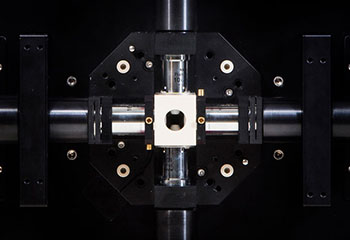
Luxendo’s MuVi-SPIM microscopes were initially developed in EMBLE's Hufnagel lab.
16 October 2015—The European Molecular Biology Laboratory (EMBL) has announced that it is launching a spinoff company, Luxendo, that will develop and market state-of-the-art light-sheet microscopes incubated at EMBL for biomedical applications worldwide. The new company, which is working in partnership with the institution’s EMBL Enterprise Management (EMBLEM) technology-transfer arm, and the founding team of which includes scientists and engineers from the EMBL team headed by Lars Hufnagel, already has one product on the market—“with other devices to follow soon,” according to the company’s release.
Light-sheet microscopy has grabbed headlines for its ability to capture stunning 3-D images at high speed, and—importantly for biomedical applications—with reduced danger of photodamage to the tissues under examination. The latter property makes it especially valuable for studying living cells. Expanding the technique has been a particular theme of recent publications by 2014 Nobel Laureate Eric Betzig. The Hufnagel group at EMBL has also actively developed light-sheet microscope technology for use in its lab work in developmental biology.
The new start-up will serve as a conduit to commercialize the ideas germinated in Hufnagel’s lab. The CEO of the new venture, Christoph Antz, called the connection “a win-win situation,” noting that it allowed the company to develop technology ideas piping hot from the lab, and then test and improve the products interactively with representatives of the target audience. Luxendo will also take advantage of what EMBL believes is a strong patent portfolio in light-sheet microscopy, managed through the EMBLEM arm.
Luxendo is already marketing one outcome of the Hufnagel lab’s work, the MuVi-SPIM—which, according to the company, allows simultaneous and rapid imaging of four orthogonal perspectives without requiring sample rotation, thereby facilitating high-speed image acquisition.
